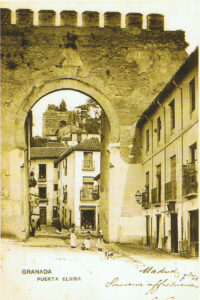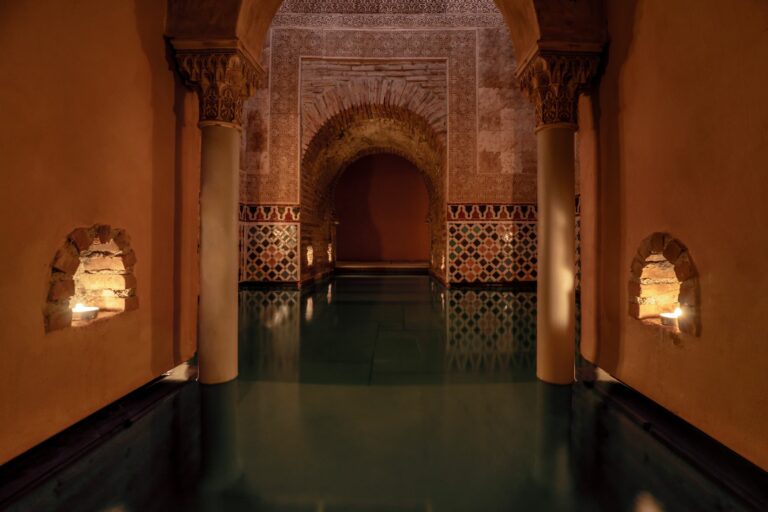Puerta de Elvira, the iconic nasrid landmark that marked the northern entrance to Granada.
Contenidos
Considered one of the great icons of the Andalusian city, the Puerta de Elvira in Granada stands as one of the most remarkable remnants of Nasrid Spain — a legacy as fascinating as it is exotic.
The northern entrance to Granada during Muslim rule
Granada preserves some of the most important vestiges of its Al-Andalus past, a heritage rich in monuments and architectural treasures. Visiting the capital of the Alhambra means going further, delving into its hidden corners and marveling at places such as the Puerta de Elvira.
Built in the 11th century by the Zirid sultans, this gate formed part of the Wall of the Medina of Granada. In its time, it was connected to the Monaita Gate to the east and the Sulfuro Gate to the south, serving as the main entrance to the old Medina Elvira, the capital of the homonymous cora in Andalusian Granada.
As centuries passed, the Puerta de Elvira underwent various renovations and transformations. Today, visitors can still admire the outer arch from the Nasrid period, flanked by two rammed-earth towers crowned with battlements, and supported by a north-side buttress.
Its cultural significance was officially recognized in 1896, when it was declared a National Historic Artistic Monument. It even appears in Federico García Lorca’s poem Ghazal of the Morning Market, a testament to its enduring influence.
Where does the name Elvira come from?
Many monuments owe their names to stories or historical details that make them unique, and the Puerta de Elvira is no exception.
Its name comes from bab-Ilvira, the original Arabic designation. This was also the name of the old Medina Elvira, as Granada was known at the time. Until the 11th century, this gate was the main link to that historic settlement.

Puerta de Elvira (Image: Granada Turismo)
Access points to the medinas during the Middle Ages
Medinas were the old central districts that formed the heart of the city. They were bustling spaces filled with markets, businesses, and essential institutions such as the madrasa and the main mosque. Enclosed by walls, often in a square layout, medinas featured access gates on all sides.
Typically, these gates were positioned to the north, south, east, and west, allowing entry for residents, merchants, and even members of the royal family.
In Granada, the medina boasted several gates, with the splendid Puerta de Elvira on Elvira Street standing out among them. Today, it remains a jewel of cultural heritage, radiating the echoes of history from the heart of the former Nasrid kingdom.



